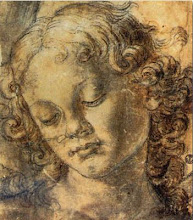 The Dead Sea Scrolls Today describes the discovery and disclosure of the many scrolls found in many of the caves near Qumran on the Dead Sea.
The Dead Sea Scrolls Today describes the discovery and disclosure of the many scrolls found in many of the caves near Qumran on the Dead Sea.- It surveys the various and numerous manuscripts:
Biblical - Targums (tefillin and mezuzot)
- Aprocrypha (tobit, sirach, letter of Jeremiah, psalm 151, pseudepigrapha, Enoch, Jubilees, and testament of 12 patriarchs)
- Habakkak commentary
- Psalm 37
- Themed commentaries (Floriliegium, Testimonia, Melchizedek texts)
- Geneisis (paraphrases, legal texts, Damascus document
- Manual of Discipline
- Temple scroll
- Torah
- Writings of worship (cycle of Worship, liturgy, calendricalia)
- Poetic compositions (Thanksgiving hymns, other poems)
- Eschatological works (the war rule)
- Wisdom texts
Vanderkam provides a case for identifying the original owners of the scrolls and inhabitants of the Qumran settlement with his Essene hypothesis. The Essenes were one of three ancient Jewish groups or philosophies named and described by historian Josephus; the other two (or three the Zealots are included) were the more famous Pharisees and Sadducees featured in the New Testament Gospels and Acts. Josephus tells of these three groups being active from mid-second century B.C. unit the destruction of Jerusalem in A.D. 70. Pliny described the Essenes as a celebate group of men renouncing money, living on the west side of the Dead Sea, but a sect continuing over that space of history, remarkably according to Pliny, considering they were not known to traditionally breed. (p. 72)
Vanderkam suggests the beliefs and practices of the Essenes agree well with the beliefs and practices presented in the Dead Sea Scrolls. (p. 75) Vanderkam references the Manual of Discipline for the theology of predeterminism and the afterlife and practices of non-use of oil, communal property ownership, purity rites (of eating, bodily functions and spitting).
Differences between the sect and the Essenes according to Josephus included the initiatory procedure and marriage legislation. The group hypothetically could have been a variant of Sadducess or a fortress of people who during the First Jewish Revolt fled to the site from Jerusalem with the manuscripts to hide them from approaching Romans and who had no direct connection with the caves. This anti-Essene hypothesis points for evidence to the lack of legal documents and contracts and lack of (autographic) original, firsthand texts. Since the anti-Essene hypothesis fails to account for the consistency of the Qumran corpus, Pliny’s descriptions, or for the Qumran buildings, Vanderkam found that the Essene hypothesis is the most compelling of any. (p. 97)
If we accept Vanderkam’s thesis, the Qumran Essenes then had specific ideas about predeterminism, the two ways, the New Covenant, scriptural interpretation, the latter days, special laws, the universe, worship and the messianic end of days.
Interestingly, Vanderkam identifies close parallels with the New Testament and suggests that Christianity emerged from Judaism with examples of similarities, congruencies and direct matches in language, references to “the many,” the guardian, phrases from the Sermon on the Mount, practices, characters, eschatology and teachings.
“The Qumran literature has shown to a far greater extent than was sensed
before 1947 how deeply rooted early Christianity was in the Jewish soil that
nourished it. Because of the scrolls, one can more easily see that a large
number of Christianity’s beliefs and practise were not unique to it. The major
contribution of the scrolls to New Testament study is to highlight the simple
but profound fact that the uniqueness of the early Christian faith lies less in
its communal practices and eschatological expectations than in its central
confession that the son of a humble woman and a carpenter from Nazareth in
Galilee was indeed the messiah and son of God who taught, healed, suffered,
died, rose, ascended, and promised to return in glory to judge the living and
the dead. By claiming that the historical Jesus was the messiah, the Christians
also placed themselves farther along on the eschatological timetable than the
Qumran Essenes, who were expecting their messiahs to come in the near
future.” (p. 184.)




No comments:
Post a Comment